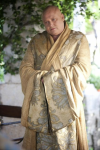
The wooden statue of Kaaper, often referred to as "Sheikh el-Balad" (Arabic for "chief of the village") found in the Saqqara necropolis by Auguste Mariette. Known as Sheikh el-Beled (Headman of the village) because the workmen who discovered it thought it resembled their village chief. It is one of the most remarkable examples of realism in ancient Egyptian art. Dating to the Old Kingdom, specifically the 5th Dynasty (2435-2306 BC), it represents a high official named Kaaper, who was a chief lector priest.Crafted from sycamore wood, the statue (h: 112cm) is celebrated for its naturalistic depiction of a corpulent, well-to-do man, contrasting with the often idealized representations of pharaohs and royalty from the same period. The statue shows Kaaper walking with a staff (now a copy), his left foot and arm forward. The eyes are a standout feature, made of rock crystal and copper, giving them a lifelike quality. The statue also includes elements of calcite, quartz, and black stone. Kaaper was not of the highest social rank, but his statue is highly regarded for its artistry and realism. He held the titles of lector priest (Kher-heb) and scribe of the king's army. The statue was found in the same mastaba (burial chamber) as a wooden statue of a woman, believed to be Kaaper's wife. This veristic style provides a rare glimpse into the appearance of non-royal individuals in ancient Egypt. The statue's eyes are particularly lifelike, inlaid with rock crystal, calcite (for the whites), and black stone, and rimmed with copper to simulate makeup, giving the figure an incredibly vivid and alert gaze.Originally, the statue was covered in a layer of stucco (plaster) and then painted. While traces of this paint remain, the vibrant colors that once adorned it have largely faded over millennia. The arms were carved separately and then attached to the body, a common technique for wooden statuary of the period. Kaaper is depicted in a striding pose, with his left foot forward, and likely held a staff in his left hand (now a copy). This masterpiece of private statuary from the Old Kingdom is now housed in the Egyptian Museum in Cairo.
Reminds me of Varys in Game of Thrones ;-)



